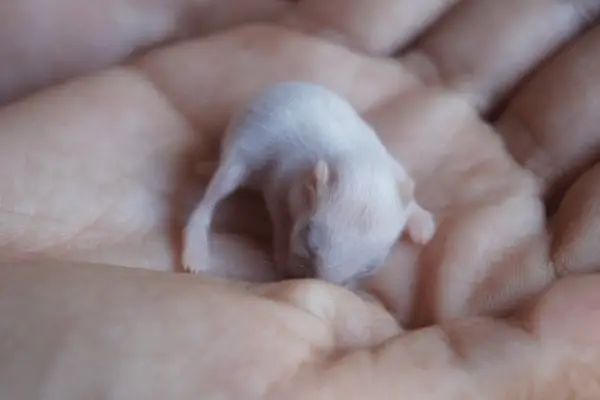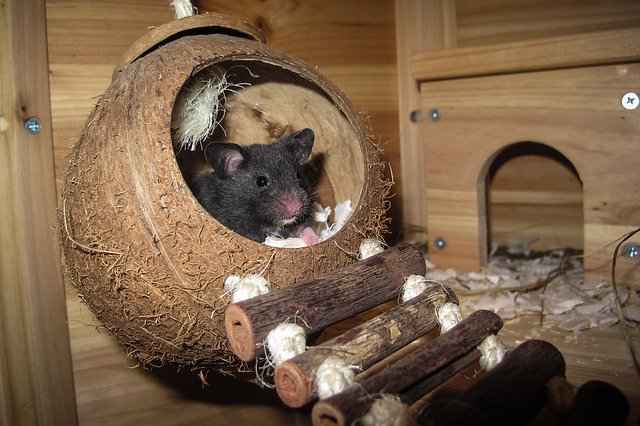Can Hamsters Get Cold [Detailed Answer]
![Can Hamsters Get Cold [Detailed Answer] Can Hamsters Get Cold](https://petcreeks.com/wp-content/uploads/2023/02/Can-Hamsters-Get-Cold.jpg)
Have you ever wondered if your furry little friend hamster can get cold?
Well, if you’re a hamster owner, you might be curious to know if these tiny creatures can catch a chill.
In this blog post, we’ll explore the topic of hamsters and cold weather, so keep reading…
Can Hamsters Get Cold
Yes, hamsters can get cold. The ideal temperature to keep a hamster is between 20-23 C/68-75 F, with no drafts or direct sunlight.
If the room temperature falls far below 20 C/68 F for a long period, hamsters can get cold.
Hamsters can also develop respiratory tract infections that are symptomatically similar to the human cold.
However, during hibernation, a hamster’s body temperature will drop to match the environment, so feeling cold is not always a cause for concern.
Symptoms of cold in hamsters
Here are some common symptoms of a cold in hamsters:
- Watery eyes: A hamster’s eyes may appear watery, and they may discharge something clear or just barely opaque when they are sick. The eyes may occasionally be puffy or inflamed.
- Sneezing: Sneezing is one of the most prevalent signs of a cold in hamsters. A hamster with a cold could sneeze regularly or develop sneezing fits unexpectedly.
- Runny nose: In hamsters, a runny nose is another typical sign of a cold. The hamster may have trouble emptying their nasal passages, and the discharge may be clear or just opaque.
- Decreased grooming: Hamsters are naturally clean creatures who frequently groom themselves. Nonetheless, they might groom themselves less regularly while they’re ill. As a result, their fur may accumulate dirt and bacteria, which may aggravate their illness.
- Breathing difficulties: A hamster may experience breathing difficulties as their cold becomes worse. This is a dangerous symptom that needs prompt veterinarian intervention and may present as wheezing or difficulty breathing.
- Coughing: A hamster who has a cold occasionally develops a cough. The cough may be dry or watery, and wheezing or difficult breathing may accompany it.
- Lack of appetite: Hamsters suffering from a cold may eat less or not at all. Weight loss might result from this, which can be a significant problem for hamsters.
- Lethargy: A hamster with a cold may appear less animated and lethargic than usual. They could appear indifferent to their surroundings and spend more time resting or lying down.
- Shivering: A hamster may shiver or act as though they are shaking if they are cold or unwell. This is an indication that they are uneasy or distressed.
Tips on how to keep hamsters warm during colder months
Here are some common tips on how to keep hamsters warm during colder months that could be helpful:
- Use extra bedding to keep your hamster warm.
- Make sure your hamster’s cage is in a warm location away from drafts.
- Provide your hamster with a small hideaway hut or nest box filled with nesting material.
- Use a heating pad or heat lamp (with caution) to supplement warmth.
- Feed your hamster high-fat foods as a source of extra energy to stay warm.
- Consider placing a hot water bottle or heat pack wrapped in a towel in your hamster’s cage.
- Check the temperature in your hamster’s cage regularly to make sure it doesn’t get too cold.
- Avoid using a space heater or other high-powered heat source that could be dangerous.
- Be prepared for emergencies with a backup source of warmth, such as extra bedding or a portable heating pad.
Factors Affecting Hamster Cold Susceptibility
The following are some common factors that can affect hamster cold susceptibility:
- Humidity: When there is a lot of humidity, the hamsters become more sensitive to the cold because their fur gets wet.
- Ambient temperature: The hamster’s susceptibility to cold can be influenced by the ambient temperature of the room or area where it is kept. The hamster may be more prone to hypothermia if the room is excessively chilly.
- Age: Hamsters that are younger or older are more vulnerable to frigid temperatures than adult hamsters.
- Health: Hamsters may be particularly sensitive to cold temperatures if they have weak immune systems or underlying medical issues.
- Genetics: Some hamster breeds may have a genetic tendency to be more sensitive to cold temperatures.
- Habitat: The hamster’s vulnerability to cold can be significantly impacted by the temperature and humidity conditions in its habitat. The hamster may become more sensitive to the cold in an enclosure that is inadequately insulated or drafty.
- Activity level: Hamsters with higher levels of activity may produce more heat as a result, making them less sensitive to cold.
- Diet: A hamster’s immune system can be weakened by a portion of poor food or malnutrition, which increases their susceptibility to the common cold.
How to Prevent Hamsters from Getting Cold
Here are some steps that can be taken to prevent hamsters from getting cold:
- Maintain the temperature: Hamsters are most comfortable in temperatures between 65-75 °F (18.33-23.89 °C), so it is essential to keep their living area within this range.
- Use a heat lamp: A heat lamp or an under-tank heater can be used to keep the temperature stable and provide a warm place for the hamster.
- Provide warm bedding: Provide soft and warm bedding material such as fleece or flannel to keep the hamster warm and prevent drafts.
- Cover the cage at night: Cover the cage with a blanket or something similar at night to insulate the inside and keep the hamster warm.
- Avoid drafts: Keep the hamster’s cage away from doors, windows, and air conditioning vents to prevent cold drafts from entering the living area.
- Don’t expose them to extreme temperatures: Do not leave the cage in direct sunlight or any place where the temperature can rise beyond a comfortable level. Similarly, avoid exposing the cage to extreme cold.
- Don’t switch cages frequently: Frequent switching of cages can make it difficult for the hamster to adjust to the new temperature and living conditions, making them more susceptible to catching a cold.
- Provide a warm hiding place: Hamsters should have a cozy hideout in their cage where they can retreat when they want to rest or keep warm.
- If the temperature drops below 60 °F (15.56 °C), consider using a small space heater or a heat lamp to keep the hamster’s living area warm.
- Monitor your hamster closely for signs of being too cold, such as shivering or huddling, and take steps to warm it up if necessary.
Learn more about the signs of a sick hamster.
How hamsters adapt to their environment
Hamsters adapt to their environment in various ways.
In hot environments, they make burrows in the ground and sand to keep cool.
In the wild, they gather and store as much food as possible during times of abundance to survive during times of scarcity.
They are constantly on the lookout for food to survive outdoors.
Hamsters are also sensitive to high-frequency sounds that we can’t hear, so they should be housed away from sources of ultrasound.
When introducing a hamster to a new home, it’s important to let them get to know its cage and environment first before handling them.
Learn more about how long hamsters sleep.
Frequently Asked Questions
Can hamsters get cold?
Yes, hamsters can get cold. Just like humans, they can feel the effects of colder temperatures, especially those below 60 °F (15 °C).
What happens if my hamster gets too cold?
If a hamster gets too cold, it may become lethargic or even go into hibernation.
This can be dangerous and may require immediate action to warm the hamster up.
How can I tell if my hamster is too cold?
If your hamster is more still than usual or is curled up in a ball, it might be feeling cold. Also, check if its ears and feet feel cold to the touch.
What temperature range is safe for my hamster?
Hamsters do best in temperatures between 68 °F to 75 °F (20 °C to 24 °C). Any temperature below 60 °F could cause them harm.
How can I keep my hamster warm?
You can keep your hamster warm by placing a heating pad or a hot water bottle under its bedding or by providing nesting material that it can burrow into.
What should I do if my hamster becomes too cold?
If your hamster has become too cold, you should warm it up slowly by wrapping it in a soft, warm blanket or by placing it in a warming box.
Be sure to monitor it closely until its body temperature returns to normal.
Conclusion
In conclusion, hamsters can indeed get cold, and it’s important to take steps to keep them warm and comfortable.
By providing them with a cozy living space, plenty of bedding, and avoiding drafts, you can help ensure that your furry friend stays healthy and happy.
Remember, just like us, hamsters need a warm and comfortable environment to thrive, so be sure to keep an eye on their living conditions and make adjustments as needed.
With a little care and attention, you can help your hamster stay warm and cozy all year round!






